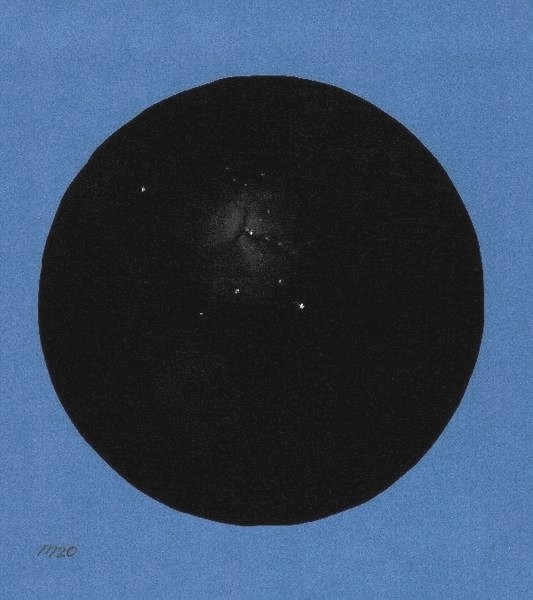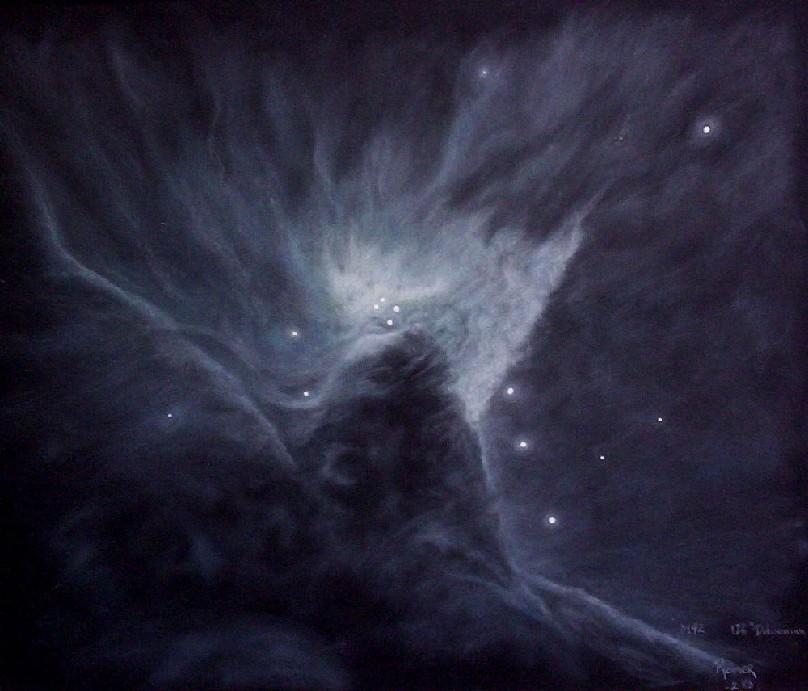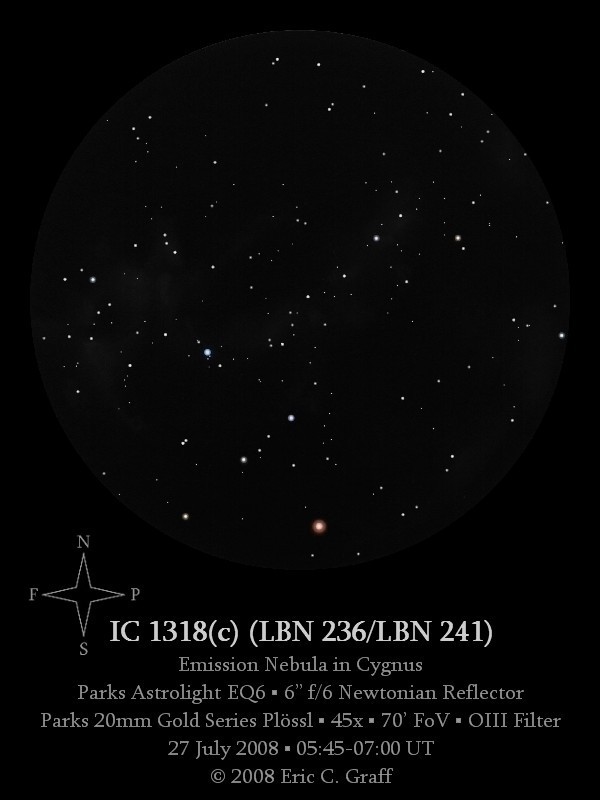
The Trifid Nebula, M20, in Sagittarius
Sketch by Janis Romer, text by Frank McCabe
This is a fine eyepiece sketch of the Trifid nebula (Messier 20) in Sagittarius. Northern hemisphere observers at dark sky sites consider it a real summer time delight. The glow sketched here is mostly an emission nebula but includes a reflection nebula component as well. Three lobes in the emission nebula portion were created by the light blocking debris remnants of exploded stars. The glow is mostly due to H II star formation regions of ionized gas and plasma heated by high energy radiation from hot young stars in the region.
The distance to this deep sky object is not well known. It is believed to be between 2,300 and 9,000 light years away. Estimates of the visual magnitude of this treasure fall between 6.8 and 9.0, making it visible with binocular or a small telescope. Charles Messier viewed and catalogued M 20 on June 5, 1764.
Location:
Sagittarius
R.A. 18h 2.6m
Dec. -23° 2′
Known also as NGC 6514
Scope used:
Criterion 8″ f/8 Newtonian reflector














